 The Danube Delta: an UNESCO World Heritage Center, Biosphere
Reserve, and all-out fascinating place just about 2 hours away from where I grew
up. Yet in 20 years of living there, I
never managed to visit. Always wanted
to, with every return to Constanța, but never got to it. This time, we finally managed to
"squeeze in" a couple days. A truly unforgettable two days. Bucket list
stuff. The only regret: not staying
longer.... for this place is meant to be enjoyed at a VERY slow pace to really "get it". We were
told that we did in two days as much as others do in four. I'm quite convinced that in itself
"diluted" the experience quite a bit... Maybe next time we'll get
lost here a little while longer...
The Danube Delta: an UNESCO World Heritage Center, Biosphere
Reserve, and all-out fascinating place just about 2 hours away from where I grew
up. Yet in 20 years of living there, I
never managed to visit. Always wanted
to, with every return to Constanța, but never got to it. This time, we finally managed to
"squeeze in" a couple days. A truly unforgettable two days. Bucket list
stuff. The only regret: not staying
longer.... for this place is meant to be enjoyed at a VERY slow pace to really "get it". We were
told that we did in two days as much as others do in four. I'm quite convinced that in itself
"diluted" the experience quite a bit... Maybe next time we'll get
lost here a little while longer...
There are many lodging options in the area. Mostly Bed & Breakfast and Guest
Houses. They’re keeping away the big
hotel chains in order to preserve the area, keep ecotourism going, and help
with conservation efforts. And frankly,
a place like this has to be experienced in a small-scale setting, anyway...
A lot of people settle for the “edge” of the delta (along
the St. George Branch) in places like Mahmudia, Murighiol, Nufăru, or Tulcea,
since that’s how far the car will take you.
But in order to really immerse in the whole thing, I suggest Crișan,
Mila 23, or any of the other similar places that are right in the middle of it
all. It’s more secluded there. More serene (in a place that’s already very
quiet). And it’s only accessible by
boat. Which naturally, make everything
more expensive.
At the recommendation of a good friend who runs a top-notch
travel agency (“plug” here for Icar Tours) we stayed at Oprisan, a family-run
B&B in Crișan. They went over-and-above to accommodate our “speedy” itinerary. Florin, one of the two brothers that runs the place, picked us up in Murighiol, and after
more than an hour of jaw-dropping journey through the marsh, narrow channels
and the reed jungle, we were in Crișan (on the Sulina branch, the only one
that’s deep enough to allow cargo ships access from the black sea to Braila and
Galati) and immediately greeted with a local moonshine made of locust
tree/acacia flowers (ţuica din floare de salcâm) and a huge bowl of pike
meatballs soup. For desert: mulberries, straight out of the tree!
After a quick siesta (things seem to slow down to a halt in
the afternoon hours, as the mercury reaches the 90F range) we were back in the
boat for a short trip around the area, mainly wanting to catch the sunset “on
the water”. As sunsets go, this one was
quite amazing. Not just because the
setting is so wild and undisturbed, but the unmistakable olfactory experience,
coupled with a “serenade” of frogs hanging out on lotus leaves, birds calling
it a night as they settled into their nests, and insects of all sizes buzzing
about, made the whole spectacle an unforgettable memory. And once he turned off the small boat engine,
everything seemed high-fidelity-clear, a very fitting soundtrack to a stunning
scenery.
 |
| Good night! |
The next day we got on the water early. Plenty of “sun” gear. Hats.
Sunscreen. Long sleeves. It’s brutal on the water. The “breeze” caused by the boat speed helps a
bit, but once you stop… there is nowhere to hide!
We made it to Letea village in another hour and a half, travelling though the “Old Danube” (the course that the river naturally carved through the Delta) and thoroughly enjoying the scenery: white and yellow lotus, pelicans, cormorants, ducks, herons, egrets, mallards, and the occasional hawk. Even a cow that came in for a bath to escape the unbearable heat!
From there, another hour each way was needed to see the renowned oak and poplar Letea forest (another World Heritage Site) and hopefully catch a glimpse of the famed feral horses (around 2,000 of them live in the area). Unfortunately, as we were planning the day, we didn’t specify that we wanted to visit the forest, not the village, so we didn’t have room in the itinerary for both. Nor was it advisable to spend 2 hours in a horse-drawn buggy under the scorching sun to make it back and forth to the forest, where mosquitoes and horseflies are apparently in abundance. So we’re saving that experience for next time…
After a quick, and I mean quick stop in the
village, as there’s not much to see there, got back in the boat for another
hour or so, to visit the spot where the Danube flows into the Black Sea. Where the murky, sediment-rich fresh-water
river meets up the dark-green salty waves of the sea. I’m sure it's a big achievement for the “river”
but a bit underwhelming for me. Frankly,
I don’t know what I was expecting. Maybe
fatigue was setting in, after being beat down by the sun all day. Apparently they had a couple other boats
equipped with a shaded canopy, but they were both in for service. Just our luck, I guess…
 The plan was to stop in for lunch in Sulina, a small town of
about 3,500 at the mouth of the river. Apparently
there are some seafood places that are worth the stop. Instead, we opted to cool off at the
beach. And guess what? Found a good seafood soup there as well (it’s
a menu staple in this part of the country, of course). The unique experience: a bath in the otherwise salty Black Sea,
where the water is predominantly “Danube”.
Check that off the bucket list as well…
The plan was to stop in for lunch in Sulina, a small town of
about 3,500 at the mouth of the river. Apparently
there are some seafood places that are worth the stop. Instead, we opted to cool off at the
beach. And guess what? Found a good seafood soup there as well (it’s
a menu staple in this part of the country, of course). The unique experience: a bath in the otherwise salty Black Sea,
where the water is predominantly “Danube”.
Check that off the bucket list as well…
Another hour or so later, we were back, ready to pack and
head out. Glad we took plenty of
pictures, since we didn’t really have time to “take in” everything in detail. As I said earlier, this place requires a MUCH
slower pace than what I’m used to in my travels. And there is much more to do; check out this site in case you want to pilot your own little craft (http://www.rowmania.ro/). Next time I’ll definitely leave time for a
canotca trip (something former World and Olympic champion Ivan Patzaichin
created by combining the traditional “lotca” used by the local fishermen, with
the sporty “canoe” in which he won countless medals). And go on a fishing trip with the locals to
learn the finer details of the trade, or hear their “caught one that big”
stories.
A quick parenthesis on that note: apparently, the locals
have a sub-categorization of the fish here, not by variety/breed, but by
size. A carp is called ciortănică if smaller than 2-300 grams,
then ciortan (2 pounds or less),
after that, crăpcean; only after it
gets bigger than 2 kilos it acquires the noble title of “carp”. The pike (ştiuca) starts as a mârliţă (under one pound), ştiuculiţă (under 1 kg), ştiucă (4-5 kg) and beyond that, caracalină. The catfish (somn) goes through the stages of
moacă, somotei, iaprac, iarma, somn, and pană (the
latter being in the “monster fish” range), and the perch (şalău) goes from strapazan to şălăiaş until reaching full maturity. Now, isn’t that a bunch of random info you
wish you never read? Welcome to my blog,
then!
All kidding aside, the Danube Delta is an absolutely
astonishing place and very tranquil for the most part (all the motorized
vessels conspire against that). It’s not
cheap, naturally, given the remoteness of it all and the fact that tourism is
still kept on a smaller scale. But it’s
worth every dollar for at least one visit.
I’ll promise you’ll definitely return.
And bring your friends!
Before I go, I want to share an album with some professional
picture taken in the Delta not long after our own trip. The photographer (Dan Mihailescu) is from my home town and a
true artist behind the camera. I always
enjoy his Black Sea pictures, and this Delta album came just in time:



... and the other entries from this summer's vacation: my Hometown and [some of] the Mountains

































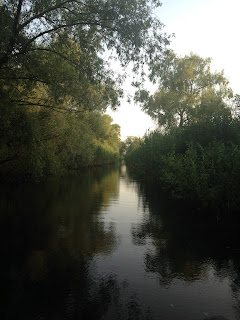










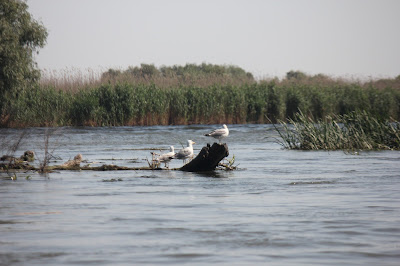

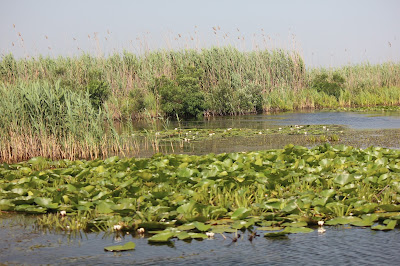







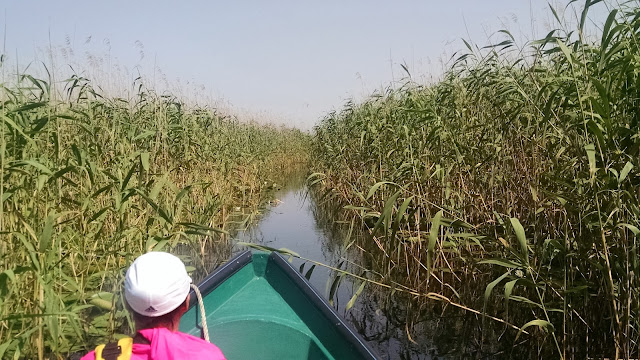















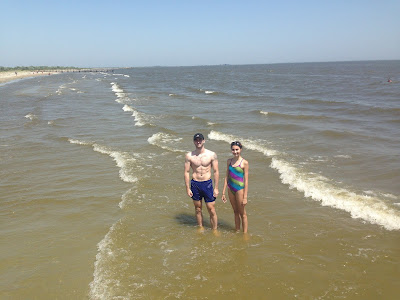

No comments:
Post a Comment